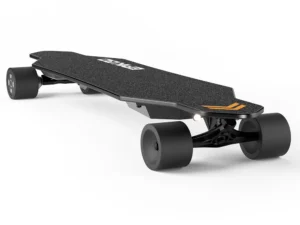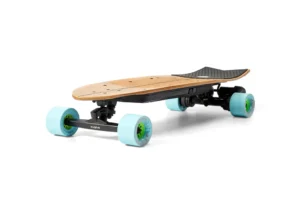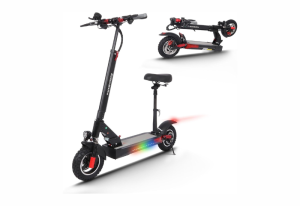Urban skateboarding can be an exhilarating experience, but it also comes with its own set of challenges and risks. Navigating through crowded streets, avoiding traffic, and mastering trickier terrain requires a combination of skill, awareness, and caution. Whether you’re a beginner or a seasoned skater, it’s important to prioritize safety while skateboarding in busy urban areas. In this blog post, we will discuss essential tips and strategies to help you stay safe and enjoy your urban skateboarding experience to the fullest.
Table of Contents
ToggleGear Up for Safety
The most important aspect of staying safe while skateboarding in busy urban areas is ensuring that you have the right protective gear. Without the proper equipment, the risk of injury greatly increases. It’s essential to gear up for safety before hitting the streets.
Essential Protective Gear
On the top of the list of essential protective gear for skateboarding are a helmet, knee pads, elbow pads, and wrist guards. These items are designed to protect your head, limbs, and joints in case of a fall or collision. It’s crucial to invest in high-quality protective gear that fits properly and provides adequate support. Along with the essential gear, consider wearing padded shorts and gloves for added protection.
Choosing the Right Skateboard
One of the most important decisions for skateboarders is choosing the right skateboard. When skating in busy urban areas, it’s crucial to have a durable and maneuverable board. Look for a skateboard with a sturdy deck, smooth-rolling wheels, and reliable trucks. Consider the size and shape of the board that suits your riding style and the type of terrain you’ll encounter in the city.
Essential to urban skateboarding is a board with good grip tape and reliable bearings. These components are crucial for maintaining control and stability while navigating through crowded streets and busy intersections. It’s important to choose a skateboard that is well-suited for urban environments to ensure a safe and enjoyable riding experience.

Skateboarding Etiquette in Urban Areas
Some skateboarders may not be aware of the importance of following skateboarding etiquette in busy urban areas. However, maintaining respect and consideration for others is crucial in ensuring the safety of everyone in these shared spaces. By adhering to proper etiquette, skateboarders can minimize the risks of accidents and conflicts with pedestrians and traffic, ultimately creating a safer environment for all.
Navigating Through Pedestrians and Traffic
Areas with heavy foot traffic and bustling vehicles require skateboarders to be particularly mindful of their surroundings. It is essential for skateboarders to yield to pedestrians at all times and to give them the right of way. When navigating through crowded sidewalks, skateboarders should reduce their speed and be prepared to come to a complete stop if necessary. Additionally, skateboarders must obey traffic signals and signs when crossing streets or intersections, just as they would if they were on foot.
Communication and Signals for Safe Coexistence
On shared pathways, skateboarders should use verbal cues and hand signals to indicate their intentions to pedestrians and other vehicles. A simple “excuse me” or “coming through” can alert pedestrians to the skateboarder’s presence, while a raised hand can signal an upcoming stop or turn. These small gestures can help create a harmonious coexistence between skateboarders and others in urban areas, fostering a safer and more pleasant environment for everyone involved.
A clear understanding and implementation of skateboarding etiquette in urban areas can make a significant difference in promoting safety and respect among skateboarders, pedestrians, and other commuters. By following these guidelines, skateboarders can contribute to a more positive and cooperative atmosphere in shared urban spaces, ultimately making the experience more enjoyable for everyone.

Advanced Safety Measures
Unlike basic safety measures, advanced safety measures provide an extra layer of protection for skateboarders navigating through busy urban areas. By implementing these additional precautions, skateboarders can further minimize the risk of accidents and injuries.
- Staying Visible at All Times
- Techniques for Avoiding Collisions
Staying Visible at All Times
With the high volume of pedestrians, cyclists, and vehicles in urban areas, it is crucial for skateboarders to ensure they are always visible to others. Wearing reflective clothing, using lights or reflective tape on their boards, and staying in well-lit areas can significantly increase their visibility and reduce the chances of accidents.
Techniques for Avoiding Collisions
Staying vigilant and anticipating potential obstacles are key techniques for skateboarders to avoid collisions in busy urban areas. Maintaining a safe distance from pedestrians, yielding to other vehicles, and practicing quick maneuvering skills can help skateboarders navigate through traffic with ease.
Plus, being aware of blind spots and understanding traffic patterns can further enhance a skateboarder’s ability to avoid collisions and stay safe while skateboarding in urban areas.
Where to Skateboard in the City
Your safety while skateboarding in a busy urban area depends greatly on where you choose to skate. Not all spots in the city are suitable for skateboarding, so it’s important to know where to find safe and legal places to ride. In this chapter, we will discuss the importance of identifying safe and legal skateboarding spots and the role of skateparks in urban areas.
Identifying Safe and Legal Skateboarding Spots
An important aspect of staying safe while skateboarding in busy urban areas is identifying safe and legal spots to ride. Look for skateboarding spots that are designated for use by the local government or skateboarding organizations. These spots are usually designed with safety in mind and may have rules and regulations in place to ensure the safety of skaters and the general public.
When identifying safe and legal skateboarding spots, consider the layout and surface of the area. Smooth pavement, wide open spaces, and minimal pedestrian and vehicle traffic are ideal for skateboarding. Avoid skateboarding in areas that are crowded or have rough, uneven surfaces that could increase the risk of accidents.
The Role of Skateparks in Urban Areas
Any urban area that supports skateboarding will likely have skateparks available for skaters to use. Skateparks are specifically designed for skateboarding and often have features such as ramps, rails, and bowls that cater to different skill levels. These designated areas provide a safe and controlled environment for skaters to practice their skills and enjoy the sport.
This chapter will delve deeper into the advantages of skateparks in urban areas, including the benefits they provide for both skaters and the community. Skateparks not only offer a safe place for skaters to ride, but they also contribute to the development of the skateboarding culture and provide a space for skaters to connect with one another.
How to Stay Safe While Skateboarding in Busy Urban Areas?
Now that we have explored the various safety measures for skateboarding in busy urban areas, it is important to remember that safety should always be the top priority. By wearing protective gear, staying aware of your surroundings, and following traffic laws, skateboarders can minimize the risk of accidents and injuries. It is also crucial to practice good etiquette and be considerate of pedestrians and other road users. By following these guidelines, skateboarders can enjoy their urban skating experience while staying safe and respectful to others.







